Good Leadership
Leadership through Listening
Erica Brown
Artwork: “A Favourite Place” by Richard Friend © 2019
Listening has never been more important.
We are at a time of profound reckoning for higher education. We have not successfully taught students to listen well. Listening is at the heart of civic virtue. Universities pride themselves on nurturing students to develop their own unique voices and express the courage of their convictions as they individuate from parents and peers intellectually and emotionally. We’ve done a great job, for the most part, at educating students to speak out. But we’ve been less adept at helping them be actively silent. We need to cultivate the virtue of deep listening that enables them, not only to co-exist with others radically different from themselves on campus, but to flourish in an environment of genuine diversity.
Cultivating Leadership Through Better Listening
“This is really hard,” quipped Hannah, a sophomore, after listening intently to her partner without interrupting for one timed-minute. “I kept wanting to cut into the conversation and add examples. That minute was really long.” The conversational need to jump in and interrupt has been termed “high-involvement concentric overlapping,” by professor of linguistics and best-selling author, Deborah Tannen. And it’s legion. In Across the River and into the Trees, Ernest Hemingway wrote, “When people talk listen completely. Don’t be thinking what you’re going to say. Most people never listen.”
Listening well is a spiritually significant skill. That’s why one of the first and most important seminars we give to students in our three-year leadership and character-building cohorts is how to listen more effectively and attentively. Hannah was participating in an exercise that gets repeated over the course of her leadership training. Listening well is a form of leadership contraction, making oneself smaller to make others larger, that allows for genuine human expansion.
Hannah, and half of her class, were given an index card that asked a question that creates a tolerable level of vulnerability or controversy, and then given a timed-minute to write down their thoughts. That question may be as innocuous as describing the best gift they’d ever been given or something more personal like how they manage anger. They might be tasked with describing a time they had to ask for forgiveness or who they are voting for and why.
The actual exercise takes less than five minutes but opens a universe of conversation. Listening well is at the center of good pedagogy.
After that first minute is over, students are then asked to identify a person in the room they know least well and walk over to that individual. Then they are asked to sit on chairs that face each other directly and make sure that they are physically open to the conversation by not crossing their arms, legs, or even their ankles. They are advised to keep eye contact steady for the brief dialogue. They choose which one of them begins; that student has a full and uninterrupted minute to explain what’s on the card. The listener can only give non-verbal cues of attention. The pair can take the conversation in any direction. If the explanation takes less than a minute, they can both sit in silence, or the speaker can go deeper into the telling.
Once the minute is up, the listener in the pair is given 15 seconds to ask a probing question to the speaker about the content and then the listener must be attentive for another full and uninterrupted minute. Only then do they switch places. When the pair has finished sharing, they are asked to thank one another for the conversation.
As a group, we then engage in a meta-conversation about what just happened. Students, especially extroverts, regularly confess that listening—even for two minutes—was really challenging. They often realize, in the moment and with some embarrassment, that they may have never listened attentively to anyone for that long, not friends, not family, not fellow students. Our discussion often raises the specter of social media and how the many platforms we have for self-expression may be chipping away at our personal capacity to make mental room for others.
I also ask them to name a person they consider a good listener and reflect on and describe their choices. More often than not, students offer the name of someone who is skilled and disciplined at making the thoughts and opinions of others shine and checking in for understanding.
After that, I explain our steps. The writing time was to give every participant a short time to think alone before speaking. The direction to speak with someone they did not know or did not know well, to my mind, is one of the critical steps in this activity. It captures the distinction between leading and socializing. Real leaders walk into a room and identify those they do not know. Too often in leadership, people gravitate to their supporters, those they already know or those who are pleasant. There is ease and pleasure in the familiar. But there is genuine leadership in expanding one’s circle of influence and helping strangers become friends.
We encourage our students to think differently about what dialogue is. It’s not a ping-pong match where we await our turn to react and take back the conversation; instead, it is a slow, unraveling act of revelation where difference is approached with curiosity and respect. Ideally, it should be an attempt to go out of a comfort zone to hear and intake the views of another, especially those with whom you most fiercely disagree. There is a luxury in being truly heard, even if it’s only for two minutes. It is where understanding lives.
Listening as Attention
It is in the discomfort where listening does its hardest and most sacred work, as Rabbi Lord Jonathan Sacks, my teacher and mentor, writes, “Listening is an art, a skill, a religious discipline, the deepest reflex of the human spirit. One who truly listens can sometimes hear, beneath the noise of the world, the deep speech of the universe, the song creation sings to its Creator.” Elsewhere, he writes that listening is axiomatic to the person of faith: “Religion is more than a system of beliefs. It is an act of focused listening. . . . ”
We find this call to listen and to be heard all over the book of Psalms. Petitioners beg God to hearken to their words: “Give ear to my speech, O Lord; consider my utterance. Heed the sound of my cry…Hear my voice, O Lord, at daybreak; at daybreak I plead before You, and wait” (Ps. 5:2-4). In a beautiful anthropomorphic depiction, a supplicant develops love for God as the Divine Listener: “I love the Lord, for He heard my voice; He heard my cry for mercy. Because He turned His ear to me, I will call on Him as long as I live” (Ps. 116:1–2).
There are, of course, different ways to listen. Active and accountable listening capture two different listening habits. Active listening indicates to the one speaking that you are attentive, hear what is being said, and can “parrot” back what you heard. This involves not only speech but attentive body language, eye contact, and audial indicators that you are paying attention. Even if it initially irritates the speaker to have words repeated, it does demonstrate the totality of the listener’s attention. It’s oddly both annoying and satisfying at the same time.
We’ve all been part of conversations where someone looking at a phone or computer screen says, “I’m listening,” but what we really want from them is listening with their eyes and with deep focus. That’s a mortal fault line: we pretend to listen on the phone with half an ear while also scrolling mindlessly at the same time.
Accountable listening is higher-order attention. It’s listening with a sense of personal or professional responsibility to the future. For example, someone might tell you they are unwell. Because you are an accountable listener, you will be in contact at a future time to ask how the speaker is currently feeling. On a professional basis, you might hear a patient, client, donor, stakeholder or customer tell you a piece of information about a need or want and follow up later with ideas, answers, or results.
Both forms of listening—the active and the accountable—demonstrate curiosity. Only one demonstrates responsibility.
Jewish religious study, two thousand years ago, began and is sustained today by deep listening that leads to argumentation. The havruta method pairs students who have different educational skill sets to prepare sacred texts—the Hebrew Bible, the Talmud, later rabbinic commentaries, or arenas of Jewish philosophy—together in an atmosphere of argumentation. The Hebrew root word for havruta means to join or connect. It shares the same root with the Hebrew word for friend, communicating subtly that the highest level of friendship is among those with whom we connect to through the process of argumentation.
There is a marvelous Yiddish expression that captures this kind of sincerity and directness: “You don’t die from a question.” Be curious. Be courageous. A beit midrash, a Jewish study hall, where paired students sit and debate, can be deafening. As a space, it could not be further from the cathedral silence of a library. It takes getting used to. In such a space, you have to make a real effort to listen. If you don’t listen, you will not be able to sharpen your own understanding. Active listening is important in the moment, but the real work of education is accomplished through accountable listening. Has a professor really heard what a student is asking—the words and what lies beneath them—and responded? Has a student truly listened to the professor? Listened to a fellow student?
There are other forms of listening that involve more than conversations or lessons. Marketing consultant Lindsay Bell identifies four types of listening which I’ve found instructive in helping our young leaders be more intentional about what they are both hearing and saying. They can be found in her 2013 article “Four Listening Styles Communicators Should Know.”
1. Appreciative listening aims for enjoyment and pleasure, like listening to a concert or audiobook where the audial experience is heightened and gratifying.
2. Critical listening involves hearing someone else and being able to identify key points and arguments and how your own view may differ. Critical listening is important when it comes to debating or responding to a professor, a politician, or a protestor.
3. Relationship listening, which is also called therapeutic or empathic listening, strengthens human bonds and is rooted in the ability to be both supportive and honest. We use this form of listening when problem-solving or managing conflicts among people for whom we care.
4. Discriminative listening pays attention to what is between or underneath the words: the tone, the body language, the speed. It gives the words added color or depth, and sometimes the body betrays the words.
Embracing Silence
Hannah was right. It is very difficult to listen well, which is why we need to make room in our curricula to refine the skill. Identity politics, which should have helped our campuses become places that strengthen difference, have often robbed our precious students of academic honesty, critical thoughtfulness, and human compassion. There is so much anger. There is so little love.
Soon, if not already, our students will enter offices, agencies, laboratories, or other workplaces. Some will stay within the system and go on to graduate studies. They cannot bring a bullhorn into these spaces. They cannot encamp on the grounds without risk of losing their jobs. They will not be employed or promoted without the ability to work, collaborate, or supervise those with whom they do not share the same political views, race, ethnicity, or religion. They will need to create safe spaces so that others feel seen and heard.
Have we prepared them well? Have we modeled respectful engagement ourselves?
I’m encouraged by the attempts many administrators and professors have made to quell the hatred and the violence. The next stage of civic virtue is an intensive effort to encourage understanding. Students can learn that you do not have to agree to understand. But you do have to listen.
 Dr. Erica Brown is the Vice Provost for Values and Leadership at Yeshiva University and the founding director of its Rabbi Lord Jonathan Sacks-Herenstein Center for Values and Leadership. Her forthcoming book is Morning Has Broken: Faith After October 7th. She is also the author of The Torah of Leadership and Kohelet and the Search for Meaning. Erica was a Jerusalem Fellow, an Avi Chai Fellow, the recipient of the 2009 Covenant Award, and is a faculty member of the Wexner Foundation. She has written 15 books on the Hebrew Bible, spirituality, and leadership, two of which were finalists for the National Jewish Book Award. Her book Happier Endings received the Wilbur and Nautilus Awards for spiritual writing. She also co-authored 2 books on leadership, and co-edited Ode to Joy: Happiness in the Thinking of Rabbi Lord Jonathan Sacks and Beyond. She has been published in the New York Times, The Atlantic, Tablet, First Things, and The Jewish Review of Books.
Dr. Erica Brown is the Vice Provost for Values and Leadership at Yeshiva University and the founding director of its Rabbi Lord Jonathan Sacks-Herenstein Center for Values and Leadership. Her forthcoming book is Morning Has Broken: Faith After October 7th. She is also the author of The Torah of Leadership and Kohelet and the Search for Meaning. Erica was a Jerusalem Fellow, an Avi Chai Fellow, the recipient of the 2009 Covenant Award, and is a faculty member of the Wexner Foundation. She has written 15 books on the Hebrew Bible, spirituality, and leadership, two of which were finalists for the National Jewish Book Award. Her book Happier Endings received the Wilbur and Nautilus Awards for spiritual writing. She also co-authored 2 books on leadership, and co-edited Ode to Joy: Happiness in the Thinking of Rabbi Lord Jonathan Sacks and Beyond. She has been published in the New York Times, The Atlantic, Tablet, First Things, and The Jewish Review of Books.
Spring 2025
Part I: Defining Virtue
James Arthur
Dayna L. Cunningham
Greg Lukianoff
Najeeba Syeed
Interlude: Defining Moments
Part II: Defining Vocation
MORE
















